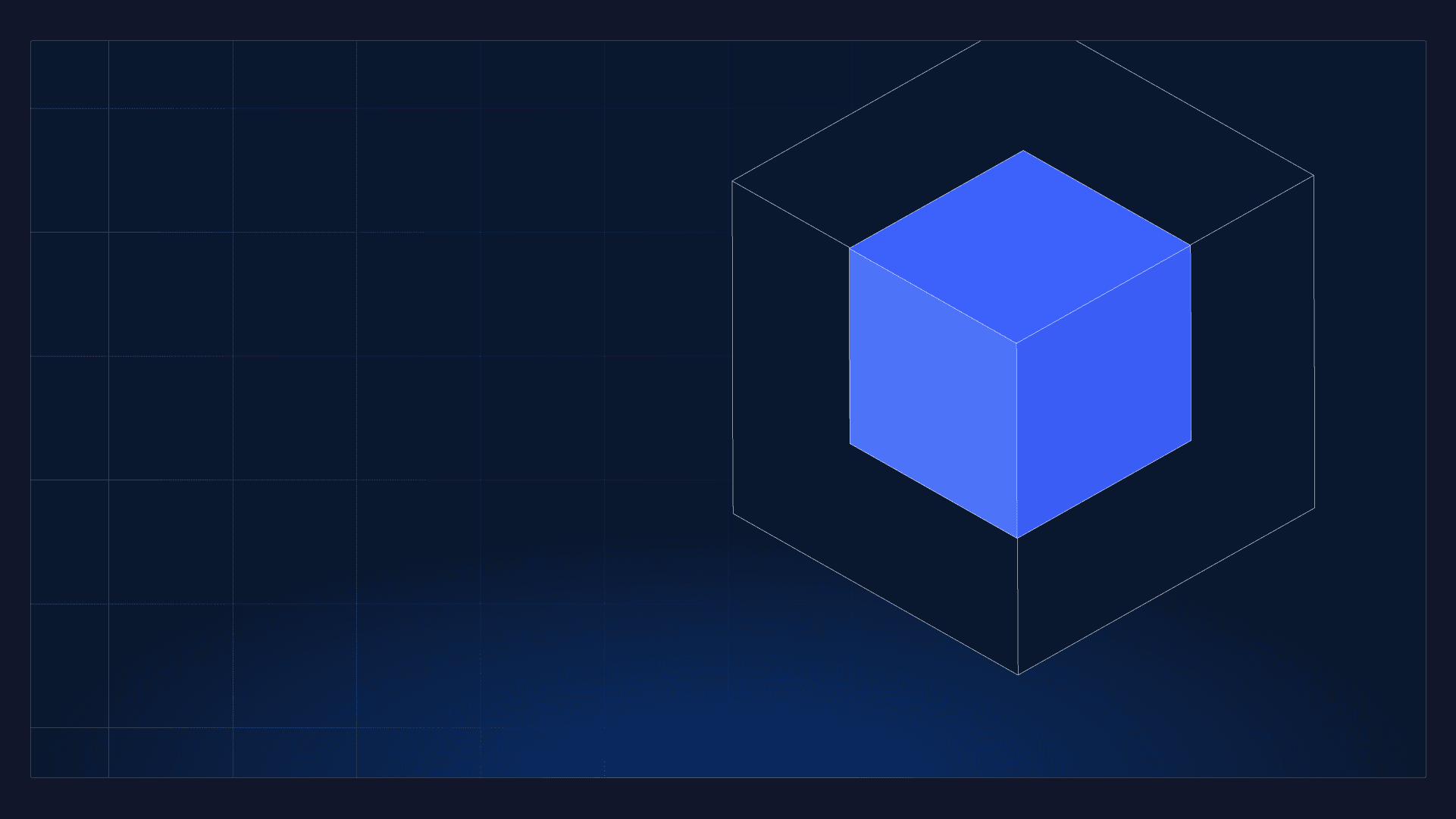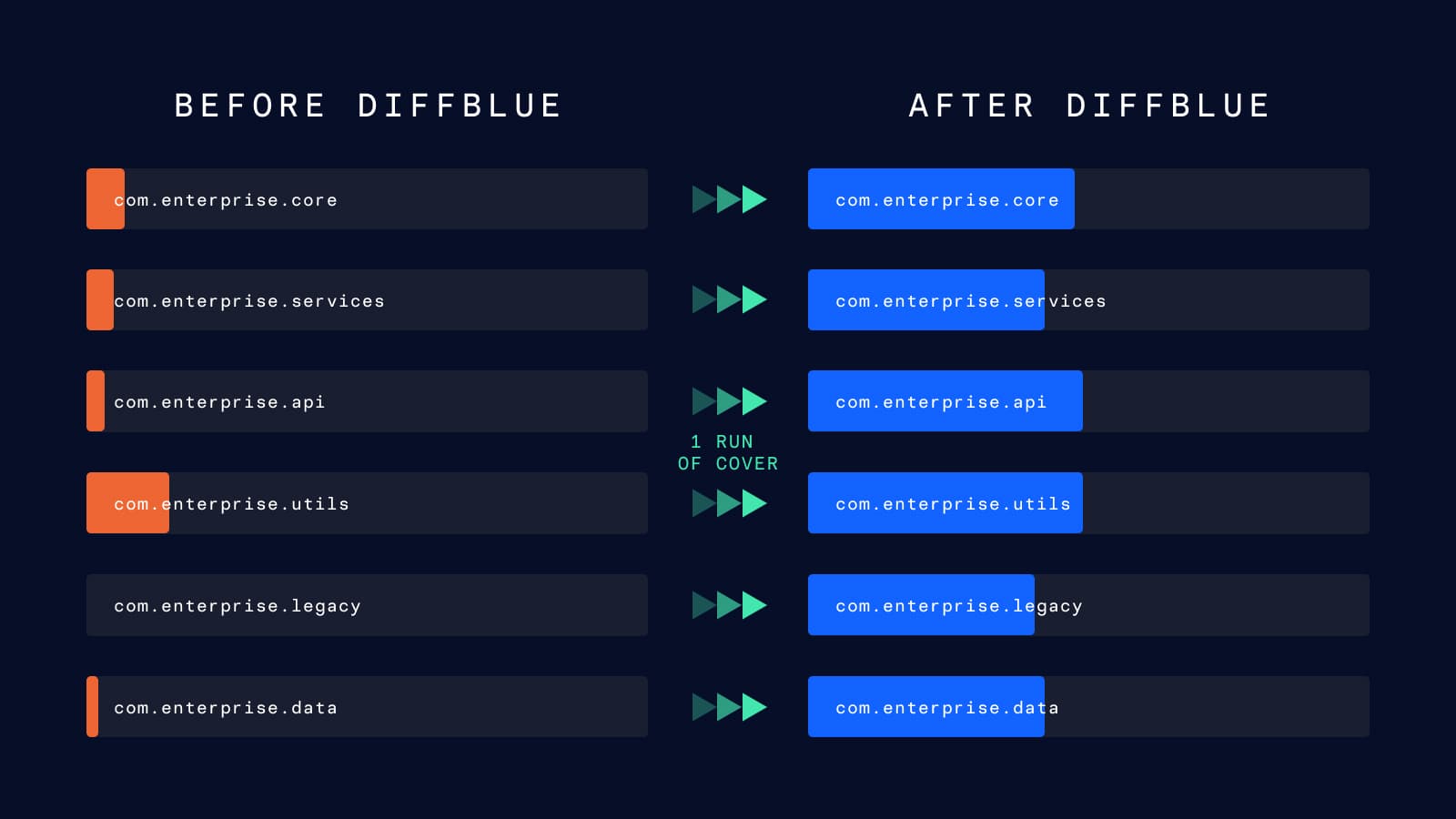What is the primary purpose of continuous testing?
Continuous testing gives instant feedback on whether new code is safe, helping teams release features faster while keeping quality high.
As engineering teams race to deliver software faster, many use continuous testing to keep product and code quality consistent across their organization. Historically, continuous testing meant setting up automated regression and integrated tests across CI pipelines. However, teams are increasingly turning to shift-left testing, ensuring code is tested as written and not just when merged.
For Java platform leaders managing CI/CD pipelines, unit testing remains the foundation of scalable, reliable software delivery. Yet in practice, it’s also the most time-consuming and inconsistently implemented layer of the testing pyramid.
Developers rarely have time to write comprehensive unit test suites across their codebase, and when they do, the tests often vary in quality and coverage between teams and projects.
In this article, we will explore continuous testing (including the shift-left approach) and how tools like Diffblue Cover can automate unit testing, enabling teams to achieve high code quality without sacrificing speed.
An overview of continuous testing
Continuous testing is the practice of automatically executing tests at every stage of the software development life cycle (SDLC), giving teams rapid feedback on each change. It is a commitment to the shift-left approach of testing early and often. Teams that practice continuous testing see the following benefits:
- Early regression detection: Continuous testing catches issues before they are deployed, improving the customer experience and preventing new bugs in the codebase.
- Reduction in human error: Engineering code review processes are designed to catch issues, but they can’t catch everything. Continuous testing supports human review by catching issues that human reviewers might miss.
- Code quality improvement: Quality code is easily understandable, contains fewer bugs, and runs efficiently. Continuous testing can flag issues that impact code quality, resulting in a better developer experience, lower technical debt, and consistent quality across the codebase.
- Lower business risk: Detecting issues earlier prevents costly outages and downtime, safeguarding revenue and customer trust.
Accelerated time to market: Instead of waiting for feedback from QA engineers, developers can work in parallel with continuous testing, resulting in faster time to market.
Continuous testing also powers modern CI/CD workflows: automated feedback on every commit keeps the main branch deployable and lets teams ship small, safe increments whenever the business needs them.
Inner vs outer loop testing
Continuous testing operates across two distinct stages in the development workflow:
- Inner loop: Focuses on the individual developer, where the code is tested on their machine as they write it. This includes local test suites, IDE integrations highlighting issues, and pre-commit hooks blocking commits with failing tests.
- Outer loop: Focuses on team-wide test operations, where the code is tested after it’s committed. This includes the CI pipeline, continuous deployment, and the actual infrastructure platforms that run in production.
Since developers usually spend more time writing code in the inner loop, optimizing testing at this stage delivers a significant impact. This is the key principle behind the shift-left testing approach, which emphasizes quality checks during development, when mistakes are the cheapest to fix. By streamlining test creation and execution in the inner loop, teams can prevent issues from ever reaching the outer loop, reducing the cost and time required for remediation.
The role of unit tests in continuous testing
Unit tests are the cornerstone of shift-left testing because they operate at the most granular level of code: individual functions, methods, and components. This helps developers validate individual code paths across the codebase, resulting in earlier identification of bugs and regressions, along with other benefits like:
- Foundation for higher-level tests: By writing effective unit tests, developers create a solid foundation for adding more complex tests (e.g., integration, system, and acceptance). When these tests fail, developers can use existing unit tests to isolate which part of the code contains a bug, speeding up the debugging process.
- Rapid developer feedback: Because they focus on isolated code components, unit tests run faster and with greater reliability than other types of tests (i.e., integration tests). This quick feedback cycle helps developers identify and fix issues early in development.
- Code quality enforcement: Beyond catching issues, unit tests can enforce an organization’s code design best practices. This helps improve code consistency, quality, and maintainability, even as the engineering team scales.
However, writing good unit tests takes significant time and effort. Developers must isolate code into individual components before writing tests against them, sometimes requiring a refactor. Additionally, if the code has any dependencies, developers might need to add mocking libraries, which can complicate test setups. Once tests are written, they must be updated with new code changes, resulting in maintenance overhead. For teams under pressure to ship, this sometimes results in missing or inconsistent unit tests, undermining the tests’ effectiveness.
AI coding assistants for unit testing
To overcome these challenges, some teams increasingly turn to AI coding assistants, like GitHub Copilot, for help. These tools exist within developer IDEs and can help demystify sections of code, suggest test cases, and generate boilerplate code for tests. However, AI coding assistants have a whole slew of challenges, such as:
- Limited scalability: Developers must manually guide the AI assistant in creating tests and reviewing its output to ensure accuracy. This high-touch approach becomes increasingly time-intensive as codebases grow—making it hard to scale for larger projects.
- Non-deterministic: AI assistants are non-deterministic, which means you’ll get a slightly different answer even with the same prompt. This variability can impact the consistency and reliability of the generated tests, making it challenging to establish repeatable testing patterns or enforce organizational standards.
- Unreliable output: AI assistants aren’t trained on your codebase, so they often lack the necessary domain context to generate correct code (or give insights specific to your codebase). Additionally, these codebases are usually trained on public codebases, which could result in recommendations that violate contemporary best practices or security protocols (like suggesting outdated libraries).
While AI assistants can help developers tackle individual tasks, they are not a comprehensive solution for managing the unit testing process for a codebase, especially when consistency and reliability matter.
❌ Copilot can help you start a test, but it won’t help you scale it across modules, meet audit requirements, or catch regressions before CI breaks.
How Diffblue Cover enables continuous unit testing for Java teams
Unlike AI coding assistants, Diffblue Cover is a deterministic AI agent that analyzes your codebase and creates comprehensive unit tests—without developer intervention. Compared to AI coding assistants, Diffblue Cover delivers 4x more test coverage without sacrificing readability or accuracy. Diffblue Cover’s AI agent operates entirely within your existing environment, so no data leaves your servers. By integrating Diffblue Cover in your continuous testing workflow, you can:
- Streamline inner loop testing: Using the IntelliJ plugin, Diffblue Cover can automatically generate unit tests for local code changes. This frees developers to focus on writing code (and fixing bugs), rather than worrying about the testing pipeline.
- Automate test maintenance: As your team changes the codebase, Diffblue Cover will automatically update existing tests to match the new code behavior, so your test suite is always up to date.
- Scale outer loop testing: Using our Diffblue Cover Pipeline, developers can integrate Diffblue cover into their CI pipeline, providing automatic coverage across an entire application. Diffblue Cover works across various CI tools, including GitHub Actions, GitLab, Jenkins, and more.
💡 Use Diffblue’s preflight checks to assess module readiness and get guidance on coverage blockers—before wasting cycles on unreachable code.
With more efficient continuous unit testing, teams unlock the benefits of higher code quality without stretching their development teams. Instead of spending time writing, updating, and deleting tests, developers focus on shipping code, enhancing their productivity. Additionally, the increased testing coverage improves the quality of your codebase, reduces technical debt, and delivers an improved product experience.
Enterprise organizations that use Diffblue Cover experience these benefits firsthand. Goldman Sachs has used Diffblue Cover to increase test coverage from 36% to 72% in less than 24 hours. This has helped their engineering team refocus on other product and engineering initiatives. “It’s great to have higher confidence in the integrity of our existing codebase,” said Jonathan Goodfellow, Goldman Sachs’s Managing Director of the Quality Assurance Engineering team.
Scalable and efficient continuous testing
Continuous testing is an essential modern software best practice, enabling rapid delivery while achieving high code quality. To achieve these outcomes, companies must invest in continuous unit testing, ensuring they catch bugs and regressions early—preventing expensive mistakes later.
For Java teams, Diffblue Cover makes this process scalable and efficient by autonomously generating and maintaining unit tests. This enables organizations to get the most out of continuous delivery without adding extra tasks to their development team’s plate.
Get Started with Diffblue
Try Diffblue Cover Community Edition
Run locally on your project—no code changes required.
Download Community Edition now
See how Diffblue compares to Copilot in your codebase
We’ll run both side-by-side and show you the coverage delta.







